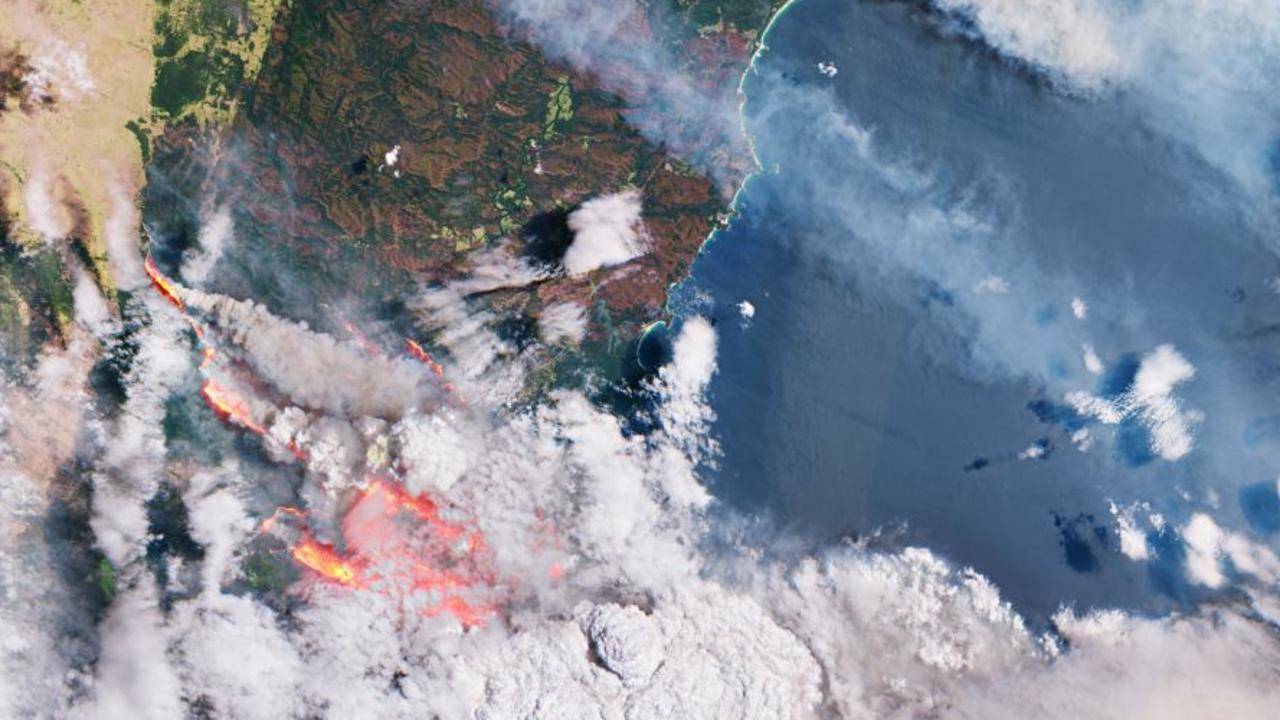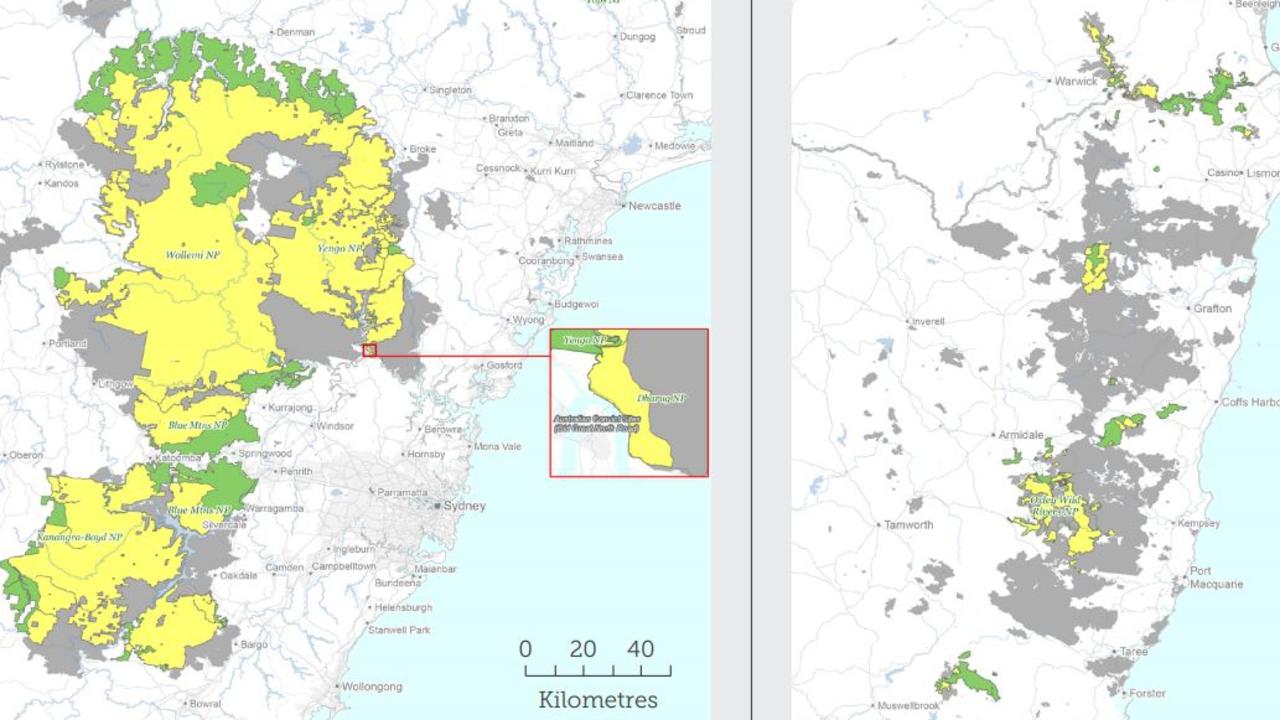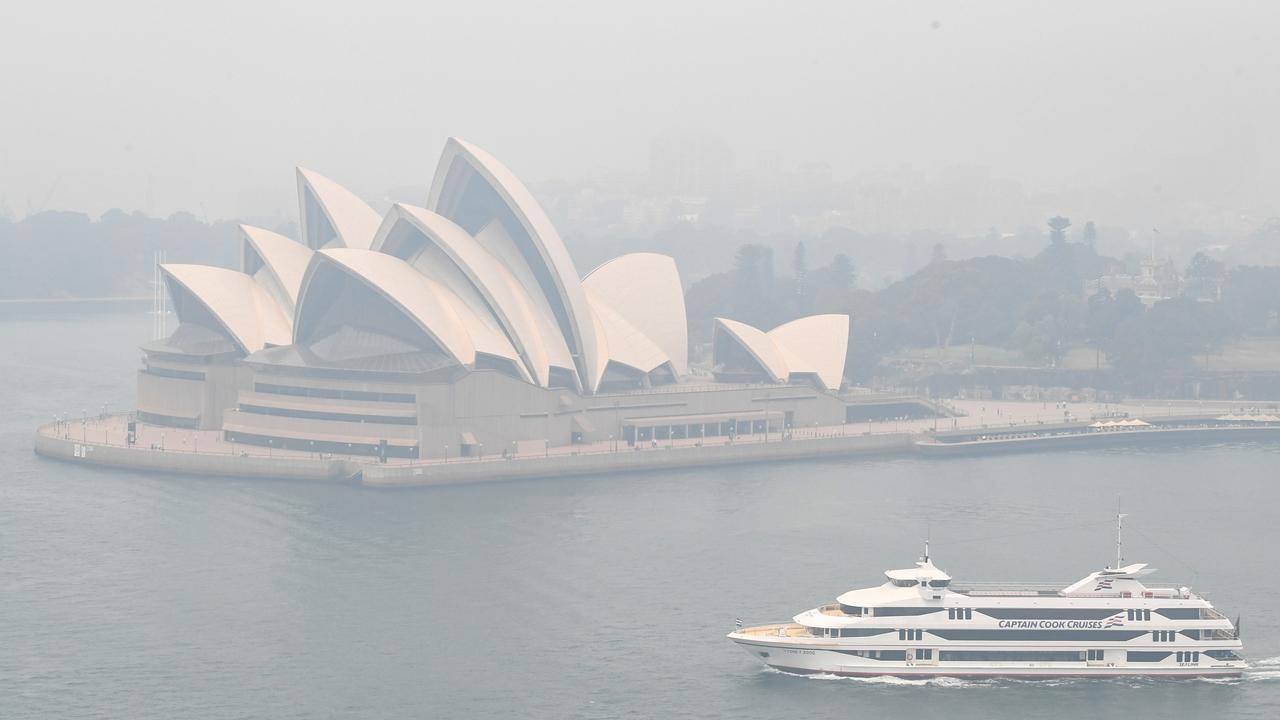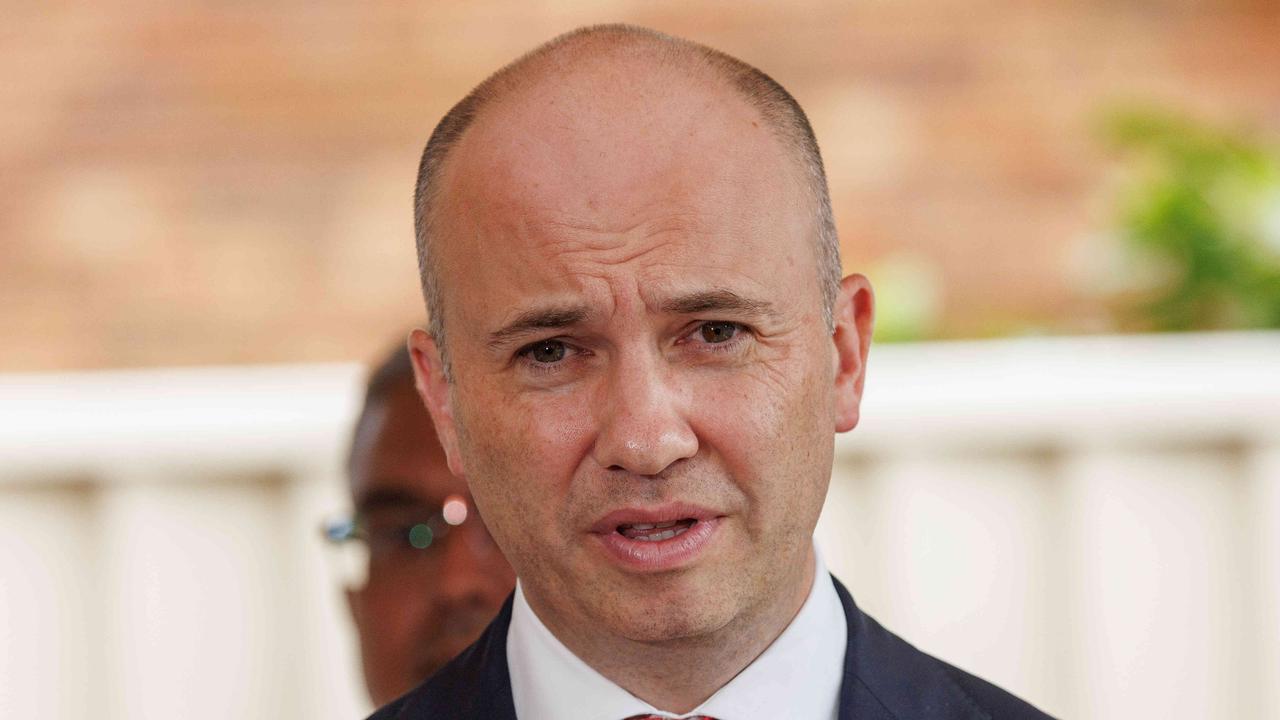The devastating toll of Australia’s bushfires revealed
A new report has highlighted the devastating impacts of Australia’s horror bushfire season, including a huge spike in carbon emissions.

The devastating impacts of Australia’s 2019 bushfire season have been highlighted in a new report from the Climate Council.
Summer of Crisis details the grim toll to Australia’s economy, its environment and animal life of the horrific bushfire season.
The fires burned more than 11 million hectares – an area larger than Ireland or South Korea – destroyed nearly 6000 buildings and killed at least 34 people and an estimated 1 billion animals.
“I’ve been fighting fires for almost 50 years and I’ve never seen an Australian summer
like this one,” former Fire and Rescue NSW commissioner Greg Mullins said.
“The data contained in this new report confirms what we all suspected.
“The bushfire season was the worst on record for New South Wales in terms of the scale of the bushfires, the number of properties lost and the amount of area burned.
“Climate change fuelled the unprecedented fires.”
Impacts include the loss of rainforest that were normally considered too damp to burn, and the release of huge amounts of carbon emissions.
The report focuses on NSW, which experienced its worst bushfire season on record, and the Australian Capital Territory because this is where the impacts were most severe.
However, it noted that the fires also affected Victoria, Queensland, South Australia, Western Australia and Tasmania.
Here are some of the impacts.
THE FIRES WERE HUGE
The bushfire season was the worst on record for NSW in terms of its intensity, the area burned, and the number of properties lost. It was also the worst season on record for properties lost in Queensland.
The Gospers Mountain fire in NSW’s Wollemi National Park was the largest forest fire ever recorded in Australia, burning more than 500,000 hectares. This mega fire is believed to have started from a lightning strike on October 26 and was eventually extinguished by heavy rain in February.
Overall 5.4 million hectares burned in NSW, which made up about 6.82 per cent of the state.
RELATED: The myths around Australia’s horror bushfire season
RELATED: Places in Australia where people will soon struggle to live
RELATED: The science behind climate change and its link to bushfires

This was more than the previous record set in 1974/75 when fires burnt through 4 million hectares of grass and scrubland. The report noted that this year’s fires burned through forests, “making these two seasons not fairly comparable”.
Usually less than 5 per cent of Australia’s temperate broadleaf and mixed forests are burnt on average but this year 21 per cent was burnt.
This is also huge compared to forests in most continents, whose average annual areas burnt are also under 5 per cent, except for Africa and Asia, which have a rate of 8-9 per cent.
About 81 per cent of the Blue Mountains World Heritage Area and 54 per cent of the Gondwana Rainforests in NSW and Queensland burned.
It was also the first time that catastrophic fire conditions were forecast for Greater Sydney since the ratings system was introduced in 2009.
Prior to New Year’s Eve, the NSW Government made the unprecedented move to issue evacuation orders for the south coast.
SO WAS THE DAMAGE
A record 2439 homes were destroyed in NSW, and the fires killed 25 people in the state including three volunteer firefighters and three aerial firefighting crew.
An estimated one billion animals were killed by the bushfires in Australia, 800 million of these were in NSW.
FIRES BURNT THROUGH RAINFOREST
The Gondwana Rainforests are usually considered too damp to burn but they also went up in flames.
About 54 per cent of the Gondwana Rainforests in NSW and Queensland burned.
These forests have developed over millions of years in a fire-free state and are not
well adapted to recovery from fire.
“It is unlikely that these areas will return to their previous ecological state,” the report said.
RELATED: Glimpse of ‘horrifying’ future for Australia

FIRE SEASON STARTED EARLY
From the beginning of July, there were 11,141 bush and grass fires across NSW and the bushfire season was well established by early spring 2019.
Catastrophic fire danger ratings were recorded at some locations on September 6, and numbers of fires burned across southern Queensland and northern NSW over the September 5-9 period, destroying several homes.
Across Australia as a whole, the highest ever spring fire weather danger, as measured by the Forest Fire Danger Index, was observed, with record high values in areas of all states and territories.
AUSTRALIA’S EMISSIONS SKY ROCKETED
The bushfires are estimated to have released between 650 million and 1.2 billion tonnes of carbon dioxide into the atmosphere.
This is more than the annual emissions of Germany and far higher than Australia’s annual emissions of around 531 million tonnes.
It was roughly equivalent to the annual emissions from commercial aircraft worldwide.
FIRES CREATED THEIR OWN WEATHER SYSTEMS
There has been an increase in the number of fire-caused storms, known as pyrocumulonimbus events.
These events were previously considered rare but there was a staggering 33 per cent increase in them in 2019.
Australia experienced only two confirmed and two possible fire-caused storms between 1978 and 2001 but there has been 78 such storms since 2001.
These storms occur when bushfires couple with the atmosphere, generating explosive thunderstorms that can include strong downdrafts, lightning and even black hail, making bushfire behaviour very unpredictable.
On November 12, several fires created their own weather systems and pyrocumulous clouds in NSW, leading to very rapid fire spread, long-distance spotting and intense fire conditions.

WE CHOKED ON SMOKE
Bushfire smoke blanketed cities including Brisbane, Sydney, Melbourne and Canberra.
Parts of Sydney experienced air quality more than 12 times the hazardous level and heavy smoke blanked the city especially throughout December as the Gospers Mountain Fire burned out of control.
The air quality index in parts of Canberra reached 4650 – more than 23 times the hazardous level.
Schools were forced to close in Sydney, Melbourne’s Australian Open was disrupted, public servants in Canberra were told to stay home and its airport was closed twice.
It’s unclear what the long-term health impacts will be, but bushfire smoke contains air pollutants such as particulate matter, and carcinogens such as benzene and formaldehyde
The smoke is estimated to have cost Sydney $12-50 million per day.

BILLION-DOLLAR COST
The bushfires are expected to cost the tourism sector alone at least $4.5 billion.
“It is estimated that there was a 10-20 per cent drop in international visitors booking holidays to Australia,” the report said.
More than 23,000 bushfire-related insurance claims were also lodged across NSW, Queensland, South Australia and Victoria between November and February, with an estimated value of $1.9 billion.




